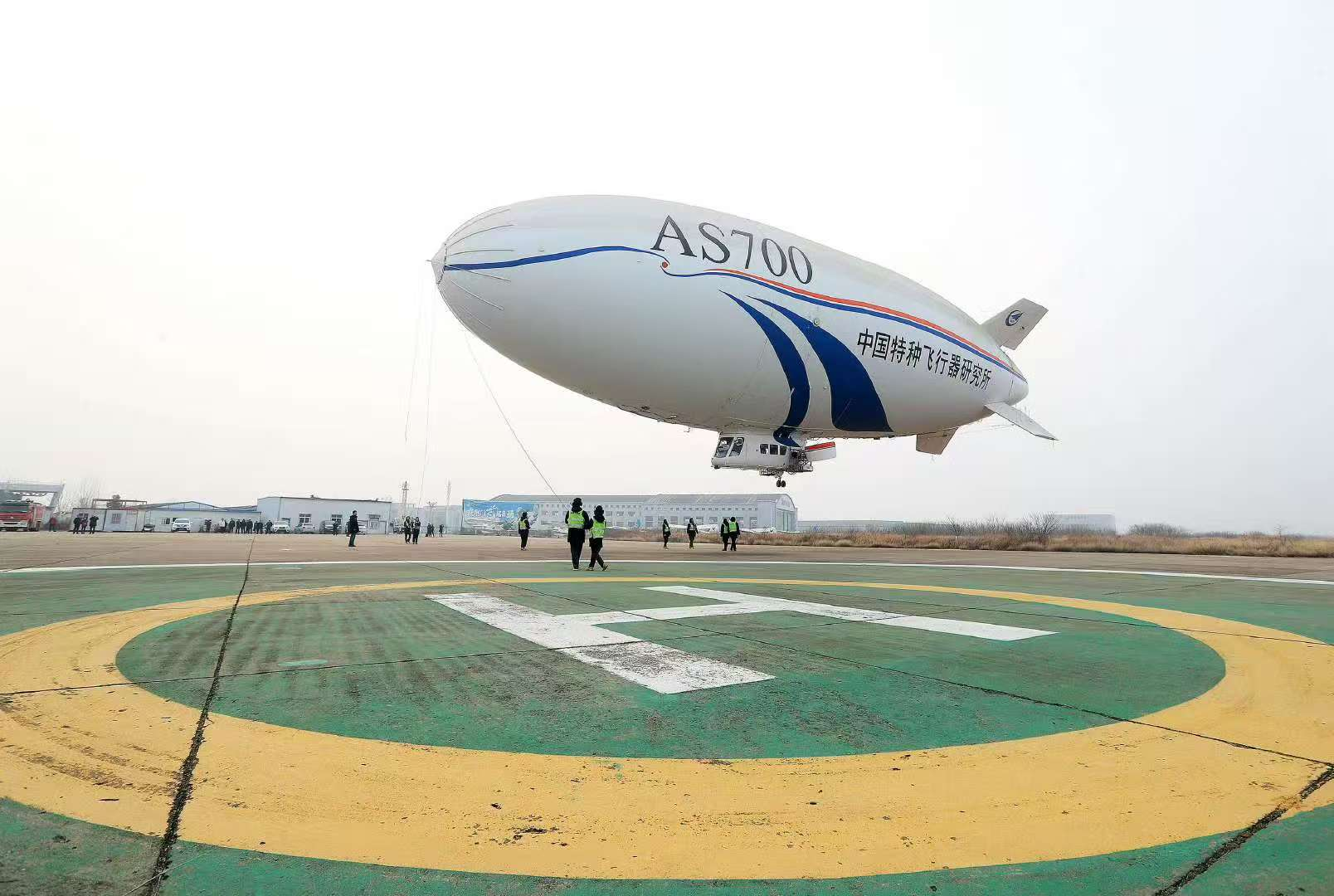
China has successfully conducted the first flight of its electric manned airship, the AS700D, marking a major step in green aviation technology. Developed by the Aviation Industry Corporation of China (AVIC), this airship is the largest ever built in the country and represents progress in the low-altitude economy — a sector focused on airspace below 1,000 meters.
Last Friday morning, the lithium (锂) battery-powered AS700D completed its maiden flight at Jingmen Zhanghe Airport in Hubei Province. It performed a vertical takeoff, rose to 50 meters, hovered briefly, and landed smoothly. Test pilot Lin Hong later conducted three short flights to test performance. He described the experience as “lighter and smoother than gasoline models, just like driving new energy cars.”
The AS700D is an all-electric upgrade of the original AS700, which uses aviation gasoline as fuel. It features zero emissions, reduced noise, and advanced systems like lithium-battery propulsion (推进力) and thrust-vector (推力矢量) controls. These improvements make it ideal for eco-sensitive areas, such as nature parks or city tours. With a top speed of 80 km/h and a maximum altitude of 3.1 km, it can carry one pilot and nine passengers.
China’s airship history dates back to the 1980s, with earlier models like the FK-4 used in the 1990 Beijing Asian Games. However, strict airspace rules and low demand previously limited commercial use. Recent government efforts to boost the low-altitude economy, such as relaxed regulations, have revived interest. The AS700 project, launched in 2018, specifically targets sightseeing needs as tourism expands.
AVIC’s Special Aircraft Research Institute, the developer, has already received 23 confirmed orders and 164 to-be-confirmed ones. The first customer, Guangxi Guilin Fangzhou General Aviation, will receive its AS700 baseline model in October for aerial sightseeing. Small-scale production of this model has begun, reflecting growing demand in China’s low-altitude tourism market.
The AS700D’s successful maiden flight demonstrates China’s progress in electric aviation innovation and paves the way for future green airships. As the country explores low-altitude opportunities, this technology could transform sustainable tourism and transportation.
原创编写 版权所有 侵权必究! 每日更新 个性化阅读 英语飙升!1.1. The word “maiden” in Paragraph 2 most likely means ________.
A dangerous
B first
C experimental
D final
解析:选B。B 词义猜测题。根据第一段的“China has successfully conducted the first flight of its electric manned airship, the AS700D”和最后一段“The AS700D’s successful maiden flight”可知,此次是AS700D的首飞。故选B。
2.2. Why is the AS700D particularly suitable for nature parks or city tours?
A It can fly faster than traditional airplanes.
B It has strict airspace regulations in these areas.
C Its quiet operation and zero emissions protect the environment.
D It was originally designed for the 1990 Beijing Asian Games.
解析:选C。C 推理判断题。第三段指出AS700D“零排放、低噪音”,并明确提到这些改进使其适合生态敏感区域(如自然公园)。选项C直接关联其技术优势与适用场景,正确。A未提及速度与适用性的关系,B与第四段“放宽政策”矛盾,D是早期飞艇FK-4的历史。故选C。
3.3. What can we infer about China’s low-altitude economy?
A It has always been popular due to relaxed regulations.
B It faced challenges from strict airspace rules in the past.
C It focuses on airspace above 1,000 meters.
D It is unrelated to sustainable tourism development.
解析:选B。B 推理判断题。根据第四段的“However, strict airspace rules and low demand previously limited commercial use.”可知,严格的空域规则曾限制商用,说明过去存在挑战。故选B。
4.4. What is the main purpose of the article?
A To criticize China’s slow progress in aviation technology.
B To compare traditional and electric airships’ performance.
C To explain the history of airships in the 20th century.
D To highlight China’s innovation in green aviation technology.
解析:选D。D 主旨大意题。全文围绕AS700D电动飞艇的首飞展开,强调其零排放、低噪音等特点,并多次提到“green aviation”和“low-altitude economy”,即文章的核心是展示中国在绿色航空技术(如电动飞艇)的创新。故选D。